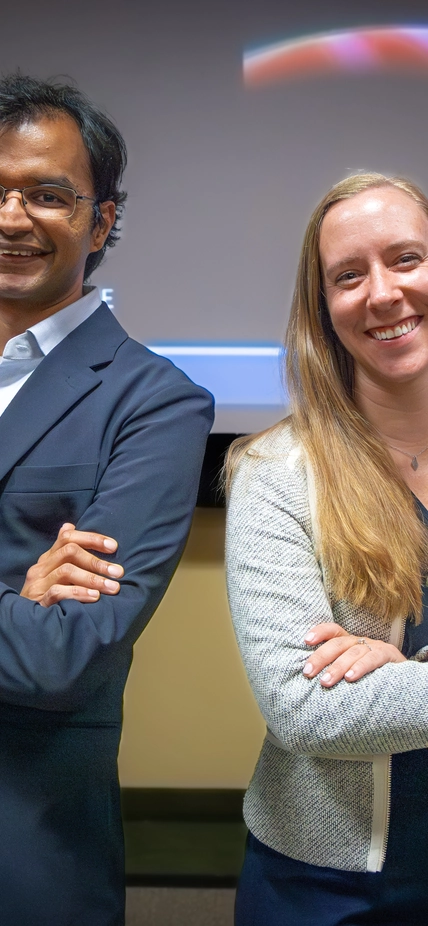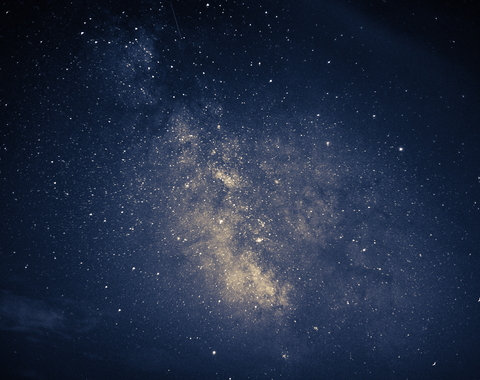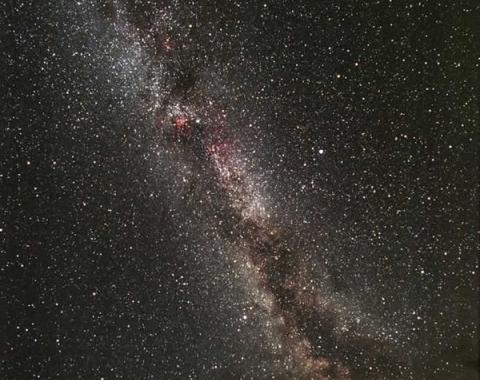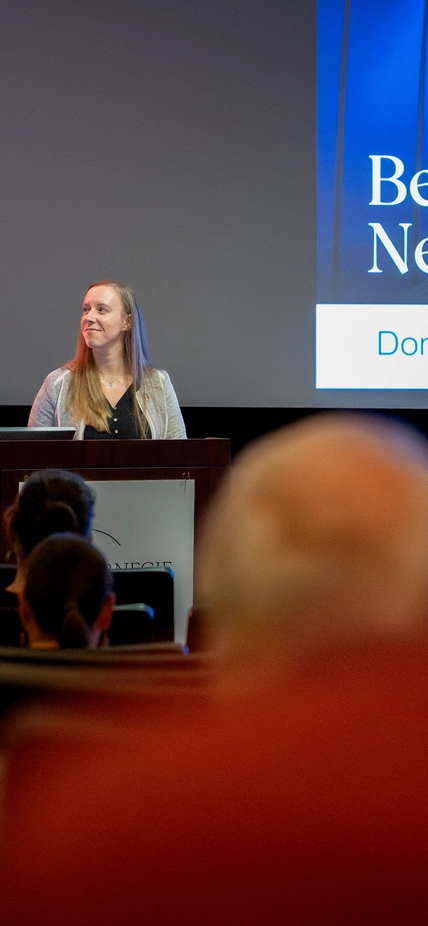Last month, the Earth and Planets Laboratory (EPL) hosted a special back-to-back edition of the Neighborhood Lecture Series entitled Birth of Worlds, Rise of Giants. The event featured Vera Rubin Postdoctoral Fellows Sierra Grant and Shubham Kanodia, who shared how they use Carnegie’s ground-based observatories and JWST to uncover how planets form—and why some break the rules entirely!
Together, their talks traced the story of planetary development, from the chemistry that shapes young planetary systems to the discovery of massive, unexpected worlds orbiting distant stars.
From Dust to Planets
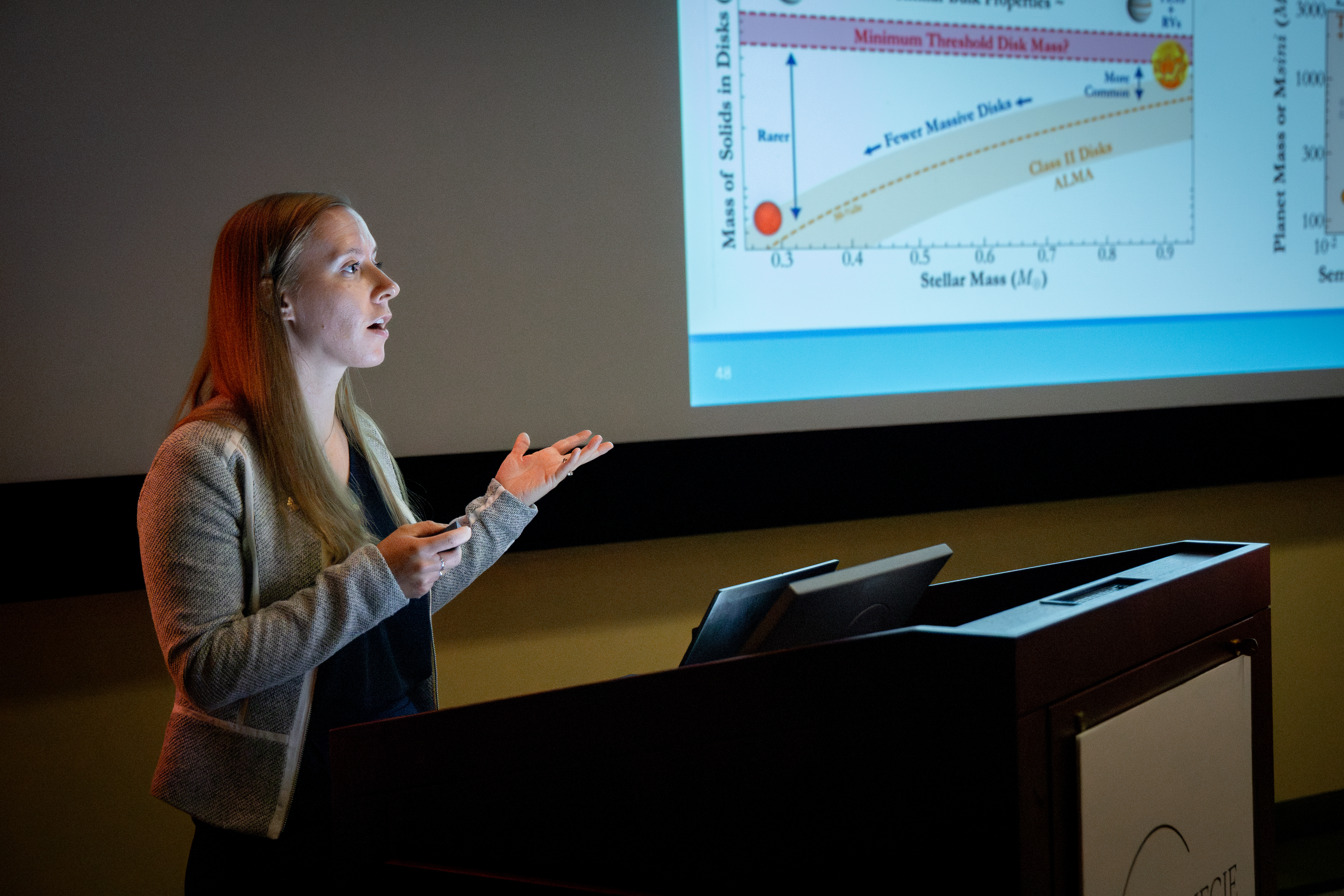
In “Building New Worlds: Witnessing Star, Planet, and Moon Formation with JWST,” Sierra Grant shared how she uses JWST to study the planet-forming disks of gas and dust that surround young stars. Her research reveals how chemical ingredients like water and carbon shape the early evolution of planetary systems.
“Around Sun-like stars, water is everywhere,” Grant explained. “But when we look at smaller, cooler stars, we see something completely different—disks filled with carbon. That was a surprise.”
Grant also previewed a first-of-its-kind finding: evidence of molecular chemistry in a disk surrounding a planet-sized object. “It’s the first time we’ve ever been able to see chemistry in a moon-forming disk,” she said. “A year ago, I didn’t think that was even possible.”
The Rule Breakers
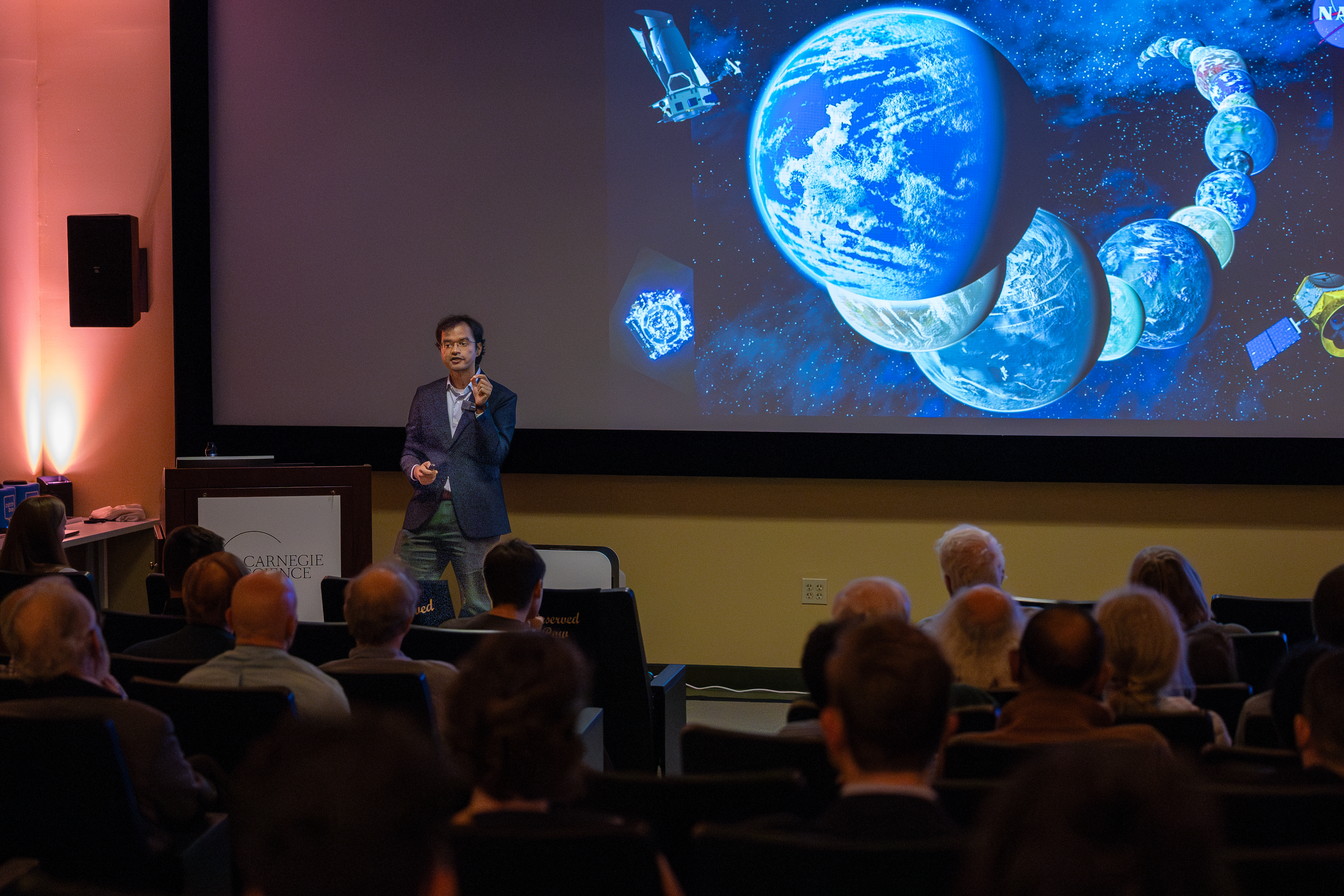
In “Forbidden Giants: Big Planets Around Small Stars,” Shubham Kanodia examined massive Jupiter-like planets orbiting tiny red dwarf stars—worlds that shouldn’t exist according to standard models of planet formation.
“These planets shouldn’t be there,” Kanodia told the audience. “The disks around small stars just don’t have enough material to make something that big—and yet, here they are.”
Through his Giant Exoplanets around M-dwarfs (GEMS) survey, Kanodia combines data from Carnegie’s ground-based telescopes and JWST to uncover these rare systems and study their atmospheres. His work may help reveal new pathways of planet formation that challenge long-held assumptions.
The Next Frontier

Both postdocs are pushing the boundaries of what current telescopes can reveal—and both are looking ahead to the next leap forward.
Carnegie is a founding partner of the Giant Magellan Telescope, now under construction at our Las Campanas Observatory in Chile’s Atacama Desert. Once complete, the Giant Magellan will be the most powerful optical telescope ever built, capable of directly observing exoplanets and analyzing their atmospheres in unprecedented detail.
The telescope will help scientists connect every stage of planetary evolution—from the dusty disks Grant studies to the mature, rule-breaking worlds in Kanodia’s surveys. In doing so, research like Grant’s and Kanodia’s carries forward Carnegie’s long tradition of using cutting-edge instruments to explore the deepest questions about how our universe builds itself. Across our physical science expertise, Carnegie researchers are building bridges between the stellar synthesis of the raw materials from which planets are born to the dynamic conditions that could enable another world to host life.
“We’ve learned a lot—and raised a lot of new questions,” stated Grant. “The discoveries we’ve made so far have just made us all so much more excited for what is still to come.”
